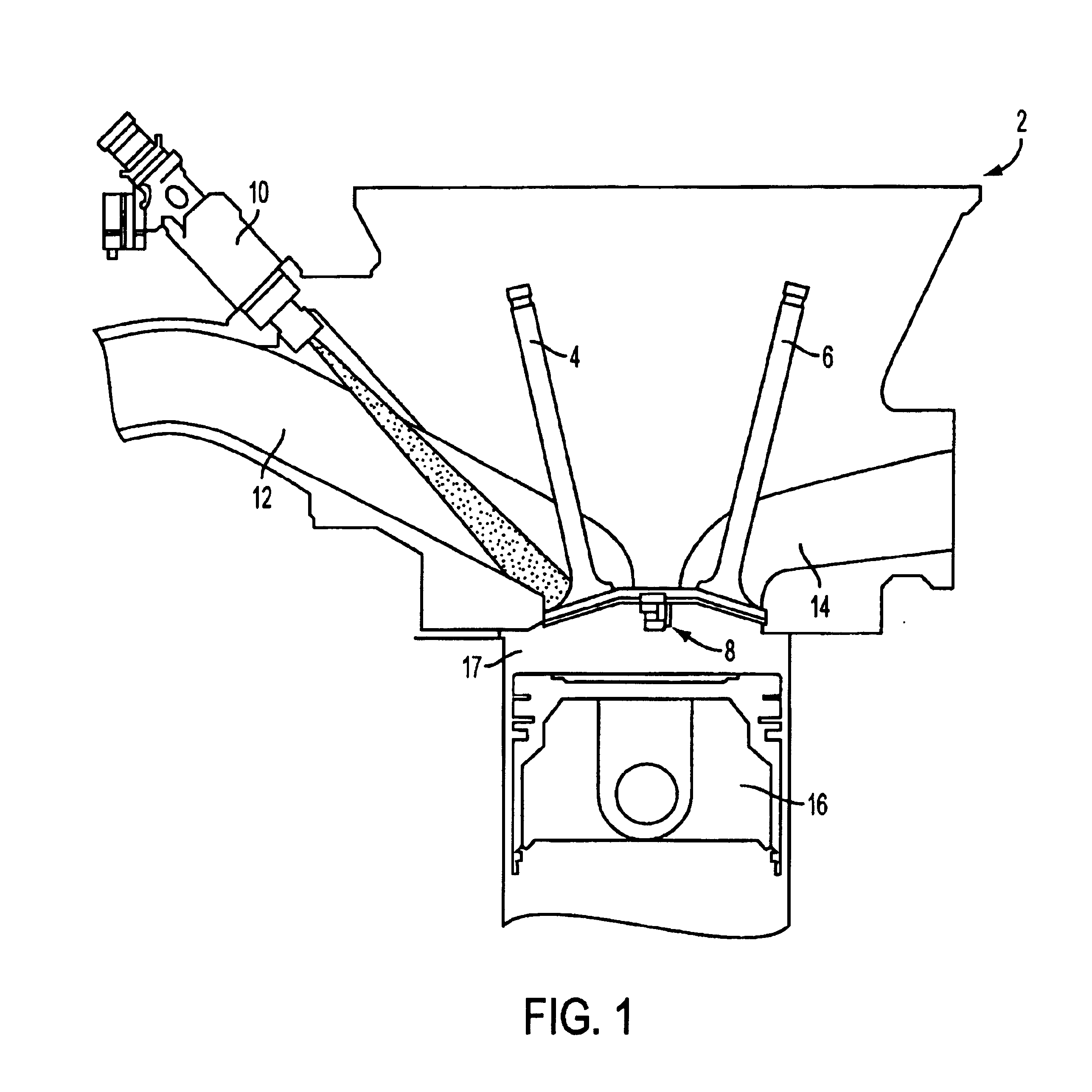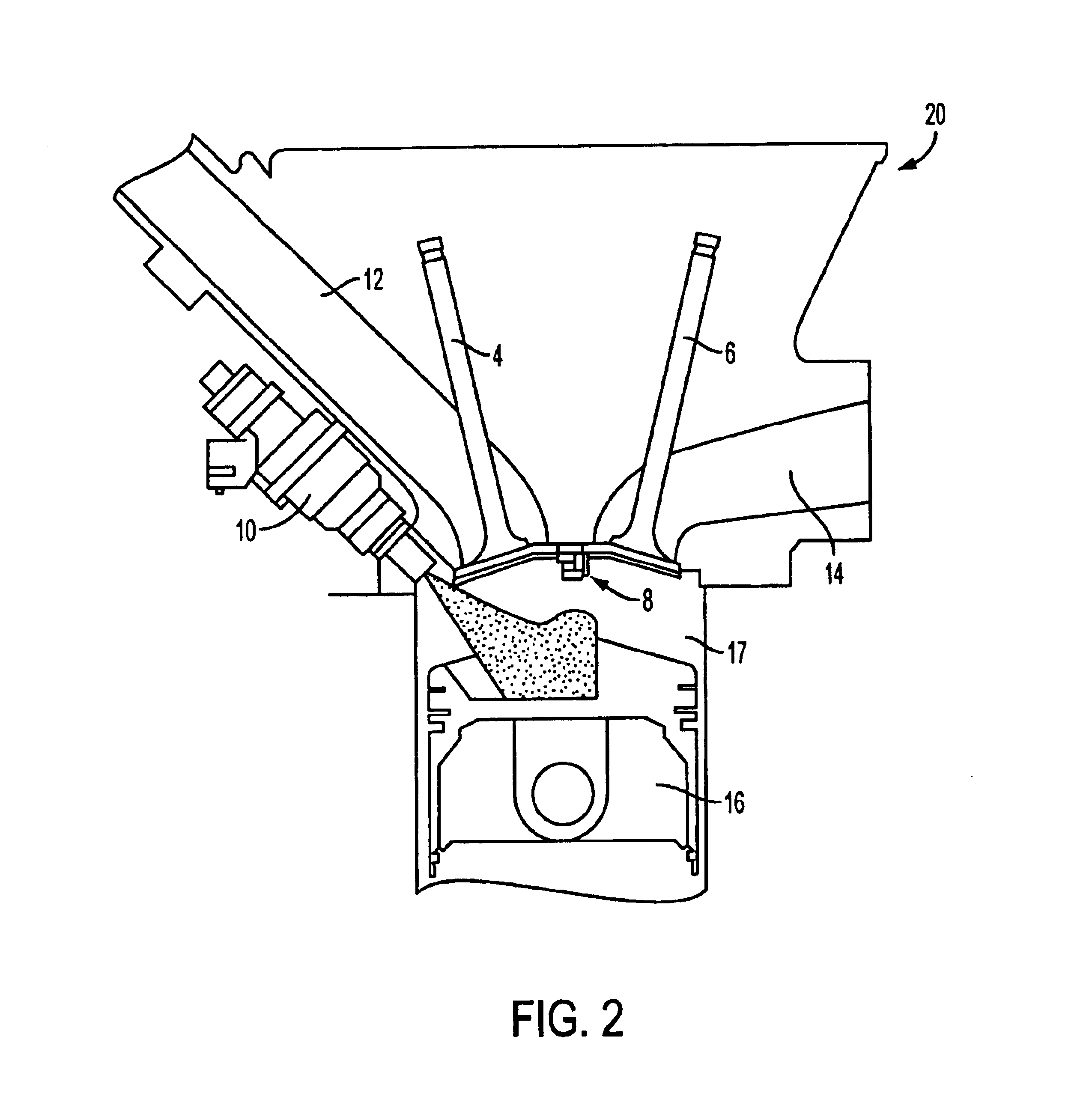Methods and apparatuses for laser ignited engines
a laser-inflammable, method-based technology, applied in mechanical devices, machines/engines, electric control, etc., can solve the problems of difficult ignition of air-fuel mixture, difficult ignition of carbon to ignition plug, and a considerable time before the flame spreads over the whole space of the combustion chamber
- Summary
- Abstract
- Description
- Claims
- Application Information
AI Technical Summary
Benefits of technology
Problems solved by technology
Method used
Image
Examples
Embodiment Construction
Turning to FIG. 4, there is shown a direct-injection engine 40 according to one embodiment of the present disclosure. It includes, among other components, the following: a high pressure fuel pump 41, an inlet port 42, a fuel injector 43, a combustion chamber 44, a laser 45, a beam steering mechanism 46, adaptive optics apparatus 47, a mounting block 48, an outlet port 49, a control unit 50, a piston 52, and a combustion chamber window 53. Several of these components may be commonly found in the field and do not warrant an exhaustive review herein. Included in that list are at least: the fuel pump, the inlet and outlet ports, the fuel injector, the piston, and the combustion chamber.
Before turning to a detailed description of individual component separately, it is worthwhile to first describe, in general terms, the operation of the engine illustrated in FIG. 4. One will note that the engine of FIG. 4 does not contain a spark plug. This absence is justified by the existence of the las...
PUM
 Login to View More
Login to View More Abstract
Description
Claims
Application Information
 Login to View More
Login to View More - R&D
- Intellectual Property
- Life Sciences
- Materials
- Tech Scout
- Unparalleled Data Quality
- Higher Quality Content
- 60% Fewer Hallucinations
Browse by: Latest US Patents, China's latest patents, Technical Efficacy Thesaurus, Application Domain, Technology Topic, Popular Technical Reports.
© 2025 PatSnap. All rights reserved.Legal|Privacy policy|Modern Slavery Act Transparency Statement|Sitemap|About US| Contact US: help@patsnap.com



